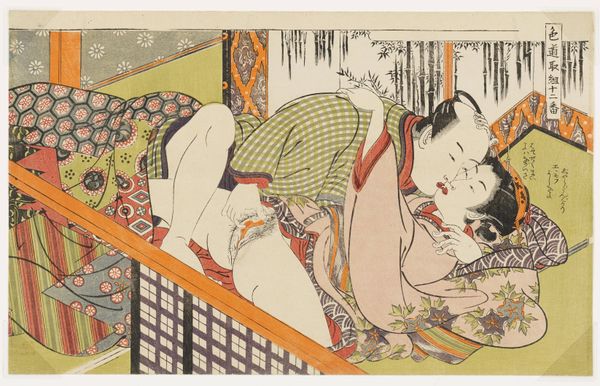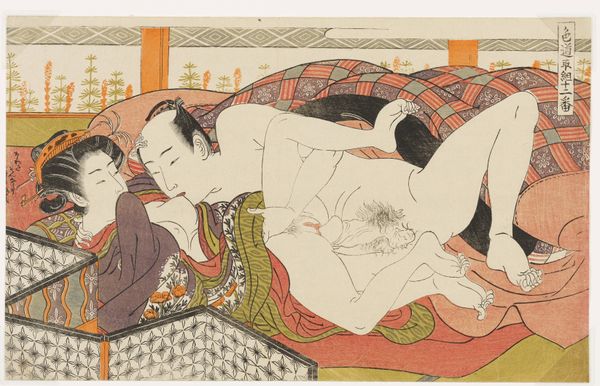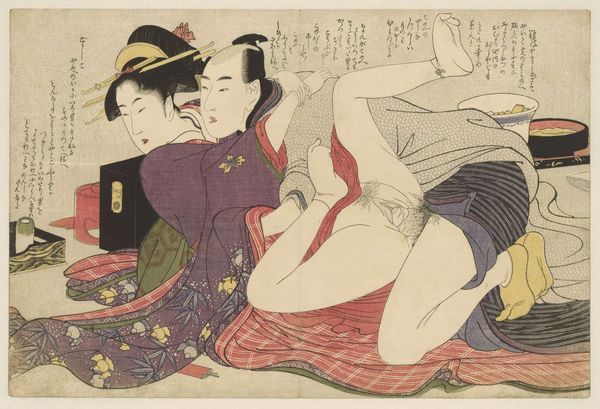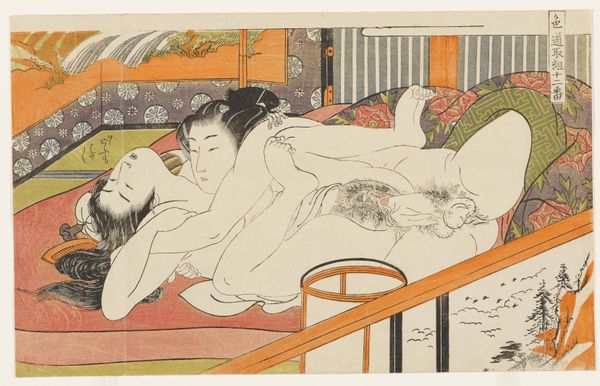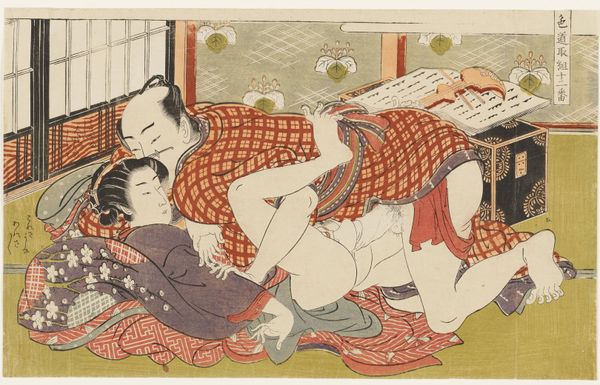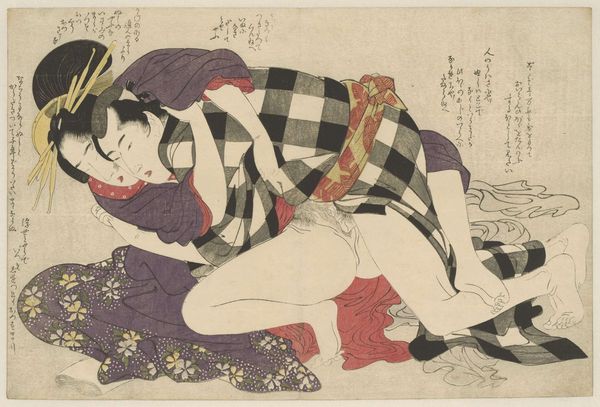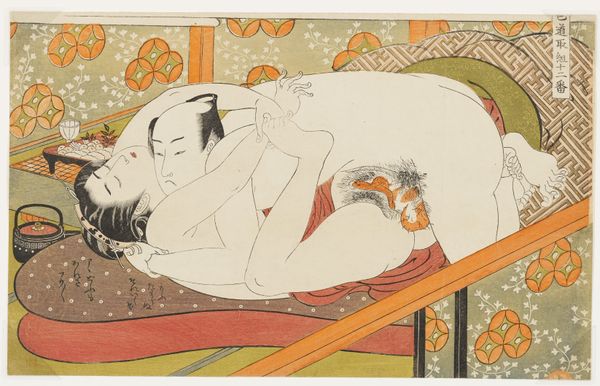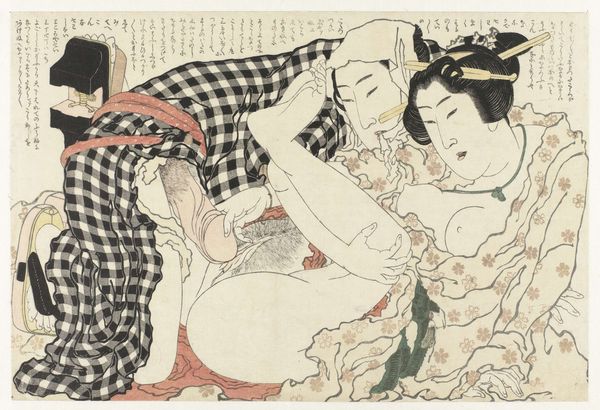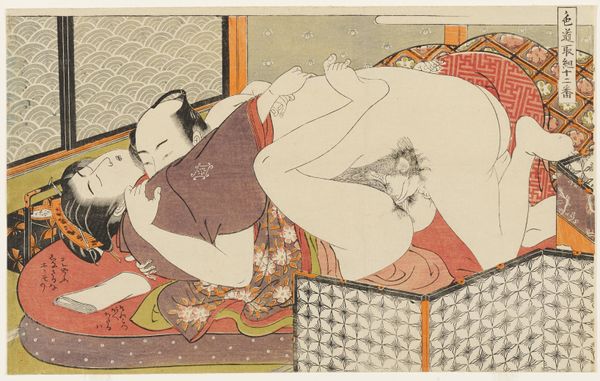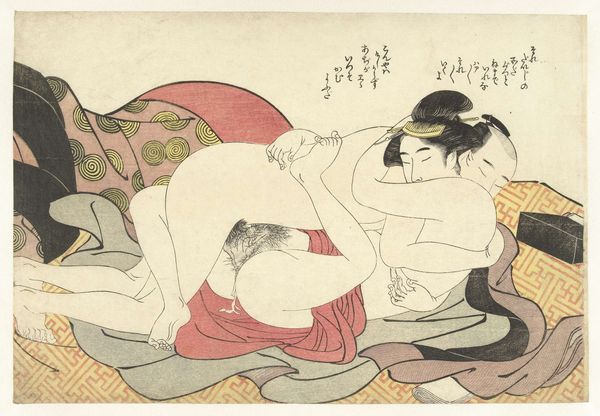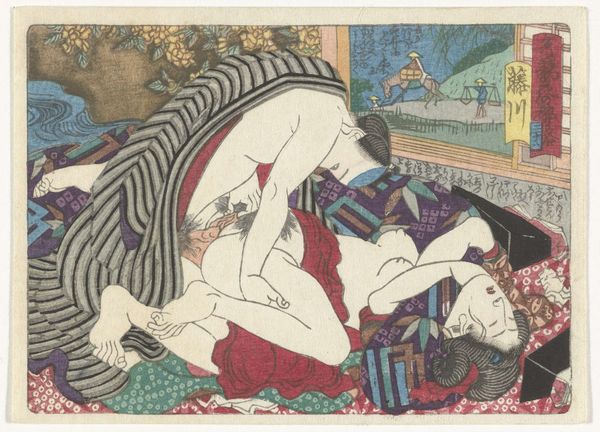
print, ink, woodblock-print
#
portrait
# print
#
ukiyo-e
#
japan
#
figuration
#
ink
#
woodblock-print
#
watercolour illustration
#
erotic-art
Dimensions: 9 1/4 × 14 1/8 in. (23.5 × 35.88 cm) (sheet, horizontal ōban)
Copyright: Public Domain
Curator: "Seamstress and her Lover," a woodblock print created by Isoda Koryūsai around 1775-1777, currently resides here at the Minneapolis Institute of Art. Editor: It’s…intimate. Immediately, the composition and the lack of pretense are striking. There's an honesty in the rawness of the depiction. Curator: Yes, that's partly the intent of *shunga*, often translated as "spring pictures," this subgenre of ukiyo-e art served multiple purposes: educational, celebratory, and even subversive. The figures are depicted as being involved in a sex act; what about the gender and social elements depicted? Editor: Look at the fine details. The woman’s garments—her kimono and the elaborate pattern on the padded cushion she’s on—suggest that, through labor or being of means, material wealth exists to the subjects involved. Notice the scattered sewing tools? What roles and labors would be prescribed to gender? Curator: Koryūsai's masterful command over the *ukiyo-e* tradition highlights the fluid lines and muted color palette of his time. His delicate attention to rendering skin tones showcases beauty. Editor: And let’s consider these "floating world" images beyond aesthetics. There is an underlying economic reality of their existence. Think of the artisans involved in production—the woodblock carvers, the printers… each print a result of collective labor, marketed and consumed. How many hands contribute to this image and its narrative of intimacy? Curator: The erotic genre of Ukiyo-e allowed the open and free depiction of human desire and was used to depict diverse genders, and served to democratize access to pleasure. The figures have an idealized appeal to their time, with smooth features that embody accepted standards. Editor: So, while aesthetically pleasing, its materiality roots us back in tangible circumstances. Consumption as both the intimate acts performed in the artwork and the material good of the image in itself. It invites us to rethink divisions—high and low art, art and craft, mind and body—demanding a holistic reading of this world created from wood, ink, labor, and love. Curator: A reminder to approach historical works like "Seamstress and her Lover" with nuance. By appreciating its artistic merit alongside its socio-cultural relevance, we gain insights that resonate in today's intersectional landscape. Editor: Absolutely. Examining an artwork's raw materiality opens pathways to critical engagement, prompting us to contemplate not only what we see but also the forces that bring it into being.
Comments
minneapolisinstituteofart almost 2 years ago
⋮
A woman is on top of her lover and in full control as she squeezes him tightly around his neck. In the foreground is a tobacco pipe and pouch, in the background is her sewing kit.
Join the conversation
Join millions of artists and users on Artera today and experience the ultimate creative platform.
